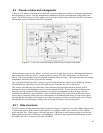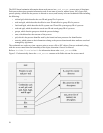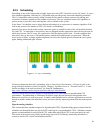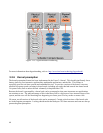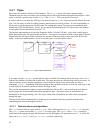
5.2.5 Scheduling
Scheduling is one of the features that is highly improved in the SLES 2.6 kernel over the 2.4 kernel. It uses a
new scheduler algorithm, called the O (1) algorithm, that provides greatly increased scheduling scalability.
The O (1) algorithm achieves this by taking care that the time taken to choose a process for placing into
execution is constant, regardless of the number of processes. The new scheduler scales well, regardless of
process count or processor count, and imposes a low overhead on the system.
In the Linux 2.6 scheduler, time to select the best task and get it on a processor is constant, regardless of the
load on the system or the number of CPUs for which it is scheduling.
Instead of one queue for the whole system, one active queue is created for each of the 140 possible priorities
for each CPU. As tasks gain or lose priority, they are dropped into the appropriate queue on the processor on
which they last ran. Now it is easy for a processor to find the highest priority task. As tasks complete their
time slices, they go into a set of 140 parallel queues, named the expired queues, per processor. When the
active queue is empty, a simple pointer assignment can cause the expired queue to become the active queue
again, making turnaround quite efficient.
For more information about O(1) scheduling, refer to Linux Kernel Development - A Practical guide to the
design and implementation of the Linux Kernel, Chapter 3, by Robert Love, or “Towards Linux 2.6: A look
into the workings of the next new kernel” by Anand K. Santhanam at
http://www-106.ibm.com/developerworks/linux/library/l-inside.html#h1.
The SLES kernel also provides support for hyperthreaded CPUs that improves hyperthreaded CPU
performance. Hyperthreading is a technique in which a single physical processor masquerades at the
hardware level as two or more processors. It enables multi-threaded server software applications to execute
threads in parallel within each individual server processor, thereby improving transaction rates and response
times.
Hyperthreading scheduler
This section describes scheduler support for hyperthreaded CPUs. Hyperthreading support ensures that the
scheduler can distinguish between physical CPUs and logical, or hyperthreaded, CPUs. Scheduler compute
queues are implemented for each physical CPU, rather than each logical CPU as was previously the case.
This results in processes being evenly spread across physical CPUs, thereby maximizing utilization of
resources such as CPU caches and instruction buffers.
59
Figure 5-13: O(1) scheduling







